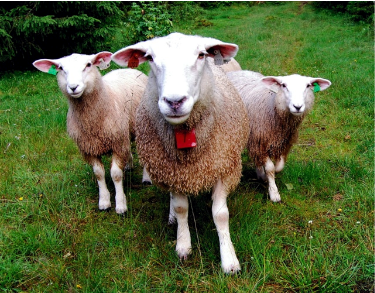Lobbyists for Norwegian farmers were fuming on Friday after the government responded to their demand for another NOK 1.8 billion in state subsidy and protection with an offer equal to around NOK 1 billion. While farmers complained the government wasn’t taking them seriously, state officials noted their offer was much higher than last year’s, and that it will strengthen the rural economy.

“We’re presenting an offer that will strengthen Norwegian food production and opportunities in order to meet important goals for agricultural policy,” stated Leif Forsell, chief negotiator for Norway’s Agriculture Ministry.
Forsell noted that over-production in the meat sector had created a “demanding market situation” that poses “the biggest challenge for agriculture” at present. He claimed that goals for increased food production hinge on market possibilities, and striking the “market balance” is the farmers’ responsibility. He considers the state’s offer generous, while making it clear that it must not add to the problems of over-production.
Plenty of food being produced
While farmers constantly stress that they need financial assistance from taxpayers to ensure food production in Norway, they have ended up producing too much in recent years. That has cut the prices they receive for lamb and pork, for example, even though consumers rarely if ever benefit in the end. Excess lamb meat has simply been stored away in freezers by the farmers’ cooperatives instead of being sold at lower prices in the grocery stores, in an apparent effort to keep prices high.
Bjarte Njå, who raises sheep and lamb in Rogaland County, Western Norway, blames a regulatory change in 2014 that offered farmers NOK 500 more per lamb if the lamb had a certain density of meat. “That prompted many farmers to increase production and many others went into the lamb business,” he told newspaper Dagsavisen this week.

Since then, lamb prices have sunk, from an average of NOK 1,500 in 2014 to NOK 1,385 in 2015 and just NOK 1,045 last year, because of all the lamb flowing into the market.
“When those of us producing it are paid less, you’d think prices in the stores would also sink, but they’ve stayed the same,” Njå said. “That’s strange.”
He thinks more Norwegians would eat more lamb if it didn’t cost so much as it does now (often more than NOK 400 per kilo in Oslo grocery stores, or nearly USD 25 per pound). That would at least make lamb more available, Njå argues, so that folks would eat it on a more regular basis, not just on Sundays or special occasions. He recently took over his family’s farming operation with around 300 sheep and is feeling the pinch himself.
Merete Furuberg, leader of the organization representing small farmers (Norsk Bonde- og Småbrukarlag), also objects to the grocery store prices for lamb. She wants more consumers to be able to buy meat directly from farmers. “The farmers have low income, while we have billionaires selling our food,” she told Dagsavisen, referring to Norway’s wealthy grocery store owners and the ongoing debate over why food prices in general are high. Various players in the proverbial food chain have a tendency to blame each other, with grocery stores claiming high taxes and costs in general. Others cite a lack of competition among grocery store chains and wholesalers.
Farmers’ advocates, meanwhile, maintain their fight for more protection from foreign imports and direct subsidy. They assailed the state’s offer on Friday, claiming it cuts support to small- and medium-sized farms while favouring larger-scale production. That in turn hurts outlying areas of Norway, where other economic opportunity is limited.
Tough negotiations ahead
“More farms will go out of operation and diversity will be weakened with this offer,” claimed Lars Petter Bartnes, leader of the country’s largest farming organization, Norges Bondelag. He also claimed that the state has not taken the higher costs facing farmers into account. He also blamed the over-production of lamb meat on incentives offered by the state earlier.
The state’s offer is aimed at raising farmers’ income by around 3.5 percent, higher than the raises offered other sectors in Norway this year but not enough to satisfy the farmers. They claim they already lag far behind other labour groups and need bigger raises in order to narrow the gaps. State officials disagree, presenting figures showing farm revenues rising by 20 percent from 2014 to 2016, while pay for other groups amounted to 4.5 percent on average over the same period.
The state and farmers’ organizations will now enter into negotiations, with hopes for a settlement later this month. Furuberg claims more direct funding from the state budget will be needed to reach the Parliament’s farm policy goals.
“The problem is that the government is using the money in the wrong way, by stressing increases in volume that lead to over-production and centralization,” she claims. “That’s what’s sending Norwegian food production into the ditch.”
newsinenglish.no/Nina Berglund

